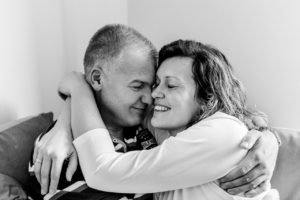Today, I had the privilege of teaching my son the meaning of courage. While watching “Toy Story”, his new favorite movie, “Mama, what’s courage?” My eyes lit up when he asked me the question. Finally! The chance to connect with my baby boy in the way I know best: speaking and translating emotions. I told him that courage is a moment during which we feel scared, but we choose to act despite the presence of fear. We feel fear but we are able to overcome it and to engage in life fully.
This conversation inspired me to write about some of my own experiences of fear and how to let the emotion guide us to courage.
1. Notice it’s happening
The first step in shifting a fearful reaction to a response of courage is to recognize, cognitively, the experience of fear. It’s amazing how easy it is to be so caught up in the experience that all objectivity is lost, which leads to reacting without ever knowing what was happening. Learning how to become aware of and label an emotional experience as it is occurring is the first step in behavior modification. Becoming aware of an experience starts by observing and objectively describing the facts as they are happening.
2. Feel it in your body
The next step is the most courageous of the three – allowing oneself to be vulnerable by FEELING something scary. In order to prevent automatically shifting into a protective, warrior mode, it is necessary to fully experience the physical sensations arising in the body. Although it can take time, learning how to sit with and *FEEL* emotions moving through the body is a critical skill. This step is arguably the most important for decreasing emotional reactivity while at the same time increasing emotional confidence and competence.
3a. Transform through vulnerability – Decoding the emotion
Once the peak of the emotion wave has passed, usually no more than 90 seconds, it is possible to shift from sitting with the physical sensations of fear to considering what the emotion might be attempting to communicate. One of the most influential analogies I’ve read regarding the information that emotions carry is in the book, “Radical Acceptance”, by Dr. Tara Brach. Dr. Brach describes the experience of inviting Mara, a mythical demon, to tea. This is exactly what this third step is all about. After sitting with the fear, the vulnerability has become far less uncomfortable and tolerating the emotional discomfort in order to understand its purpose feels much more manageable. Rather than reacting, we now have a choice: we can avoid helplessness, dependence, or even paralysis and consider what it might be like to “interview” the fear. By understanding the message fear brings, we can determine the appropriate course of action.
3b. It’s an alarm not a command
An amazing mentor of mine once used the analogy of anxiety and fear being like waking to a dog barking in the middle of the night at a random sound. Fear and its physical manifestation–anxiety–are an alarm, just like a dog. We express gratitude for its vigilance and communication and then we investigate for ourselves with this new awareness. We look for clues that the dog may be giving us (direction she is looking, intensity of alarm, etc) and then we gather additional environmental data to make a decision regarding what action to take, if any.
The ultimate message is that we have a choice! Although it can take time to learn how to interpret the purpose behind fear, practicing the steps above allows the pieces to align easier and easier. Fear and courage are inextricably linked. They are the yin to the others yang. Recognizing that fear cannot exist without courage, and vice versa, is an incredibly empowering awareness. Allowing yourself to experience and sit with your fear allows your body calling forth your best, your most courageous self.





Hi puravidanaturalmedicine.com administrator, Your posts are always well-supported and evidence-based.